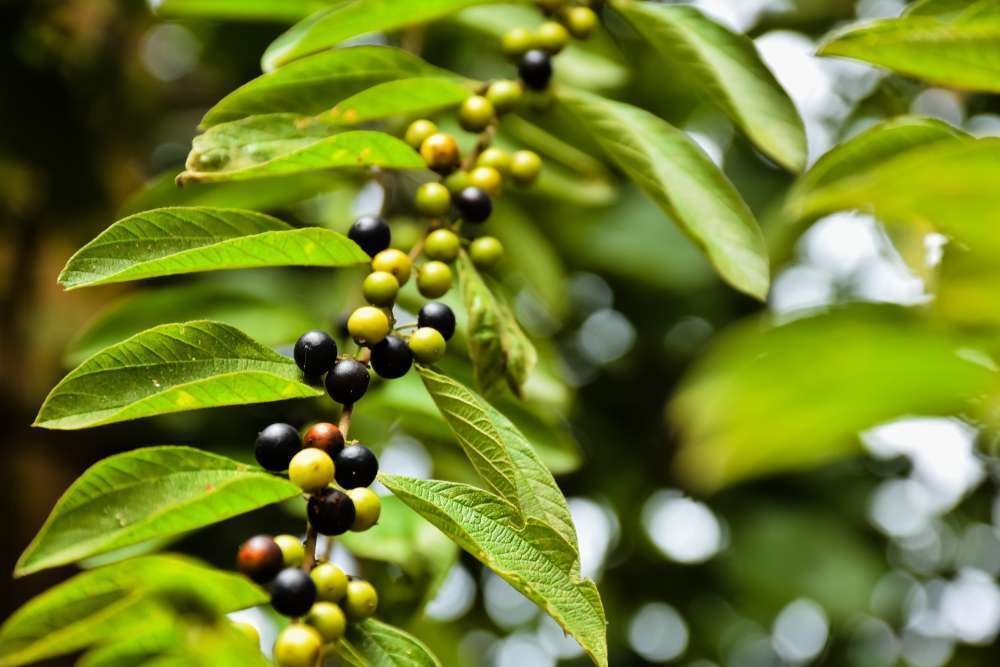JackalBerry
( African ebony or jaakalbessie )
- Diospyros mespiliformis
- IUCN Status: Not Evaluated
- Tree Type: Evergreen

- Kingdom: Plantae
- Clade 1: Tracheophytes
- Clade 2: Angiosperms
- Clade 3: Eudicots
- Clade 4: Asterids
- Order: Ericales
- Family: Ebenaceae
- Genus: Diospyros
Share:
General Information
Diospyros mespiliformis, the jackalberry (also known as African ebony and by its Afrikaans name jakkalsbessie), is a large dioecious evergreen tree found mostly in the savannas of Africa. Jackals are fond of the fruit, hence the common names.
Fun Facts!
Description
The fruit is edible for humans; its flavor has been described as lemon-like, with a chalky consistency when unripe, and sweet fleshy when ripe. On average the fruit contains 2-5 brown seeds
Uses
The leaves, bark and roots of the tree contain tannin, which can be used as a styptic to staunch bleeding. The roots are consumed to purge parasites and are thought to be a remedy for leprosy.
They are sometimes preserved, can be dried and ground into a flour, and are often used for brewing beer and brandy.
The wood of the jackalberry is almost impervious to termite damage. The heart wood is fine-grained and strong, and is often used for making wood floors and furniture. Trunks of the tree are used for canoes. The wood ranges in color from light reddish-brown to a very dark brown.
Cultivation
Jackalberry trees often grow on termite mounds, preferring deep alluvial soils, but are not uncommon on sandy soils in savanna. It grows in mutualism with termites, which aerate the soil around its roots but do not eat the living wood; in turn, the tree provides protection for the termites. The jackalberry is the largest member of its genus in the southern subtropics, and is northwards present to the Sahara. It occurs in high densities from subtropical to tropical regions.
Toxicity and Allergies
No donation to this project yet.
| M | T | W | T | F | S | S |
|---|---|---|---|---|---|---|
| 1 | 2 | 3 | 4 | 5 | 6 | 7 |
| 8 | 9 | 10 | 11 | 12 | 13 | 14 |
| 15 | 16 | 17 | 18 | 19 | 20 | 21 |
| 22 | 23 | 24 | 25 | 26 | 27 | 28 |
| 29 | 30 | 31 | ||||

Livingstone weather
Livingstone, ZM
7:09 AM,
27 July, 2024
clear sky
32 %
1018 mb
3 mph
Wind Gust:
3 mph
Clouds:
0%
Visibility:
0 km
Sunrise:
6:44 AM
Sunset:
6:01 PM
Weather from OpenWeatherMap

